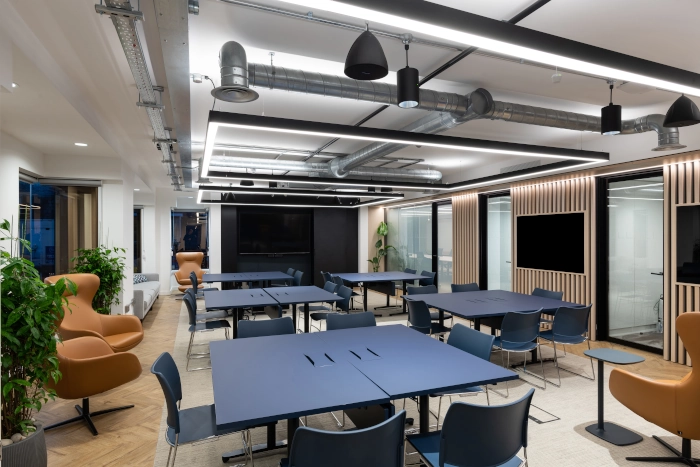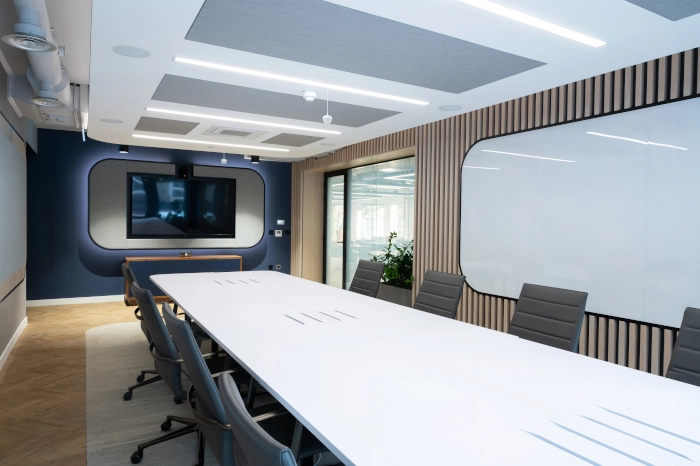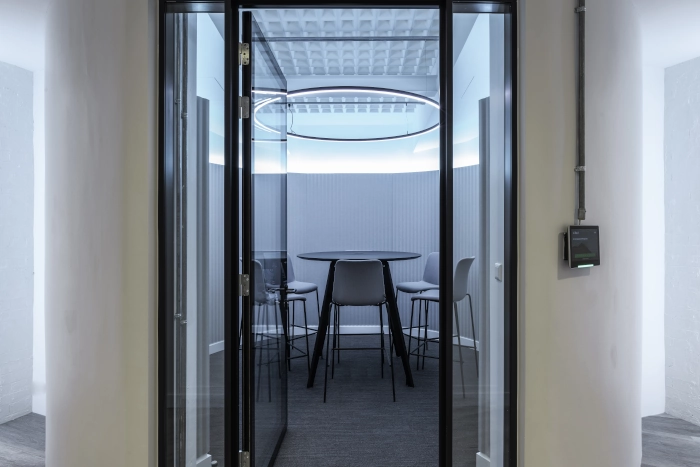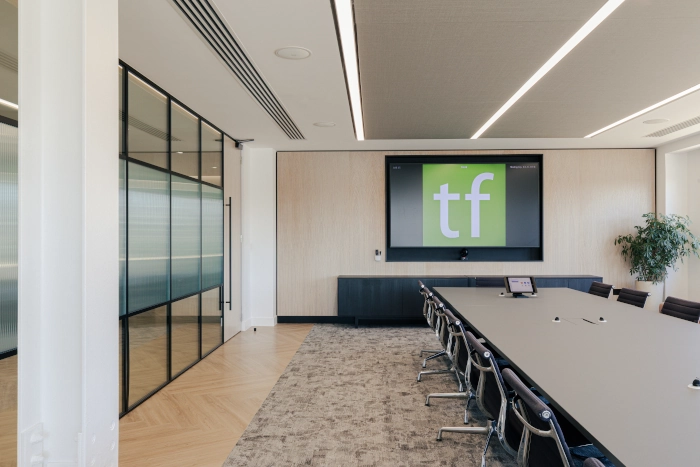Modern Meeting Room Design: Enhancing Collaboration and Productivity
17/09/2025< Back to news index

Meeting rooms often serve as the epicenters for decision-making, brainstorming, and collaboration. According to research conducted by Korn Ferry, professionals spend approximately 18 hours a week in meetings, accounting for nearly half of a typical workweek. With so much time spent in these environments, it's crucial to design meeting rooms that foster productivity, creativity, and comfort. Modern meeting room design has evolved to incorporate several key elements that cater to these needs.
Flexibility and Adaptability
Modern meeting rooms are designed to be highly flexible, adapting to the ever-changing dynamics of business operations. The use of movable furniture and partitions allows spaces to be reconfigured to accommodate different meeting sizes and formats, from small team huddles to large presentations. This flexibility empowers organizations to make the most of their available space, ensuring that it can be tailored to suit specific activities and workflows.

Technology Integration
Incorporating advanced technology is a cornerstone of modern meeting room design. Equipped with state-of-the-art video conferencing systems, interactive whiteboards, and wireless presentation tools, these rooms facilitate seamless communication. High-speed Wi-Fi connectivity is a given, enabling participants to access digital resources and collaborate with remote team members effortlessly. This integration of technology not only enhances productivity but also saves time and reduces the friction that can stem from technical hiccups.
Comfort and Ergonomics
Comfort is a critical aspect of maintaining focus and productivity during meetings. Modern meeting rooms feature ergonomic chairs and adjustable tables designed to cater to the diverse needs of users. By prioritizing comfort, organizations can ensure that participants remain engaged and attentive, even during prolonged meetings. Thoughtful design can also help reduce physical strain, promoting the well-being of employees and minimizing potential health issues.

Acoustic Excellence
Acoustics play a vital role in creating an environment conducive to effective communication. Modern meeting rooms employ soundproofing materials and acoustic panels to minimize noise distractions and echo. This attention to detail ensures that participants can hear and be heard clearly, fostering better dialogue and collaboration.
Aesthetics and Ambience
The aesthetics of a meeting room significantly impact the mood and creativity of its occupants. Modern designs often feature clean lines, natural lighting, and materials such as glass, metal, and wood, creating an inviting and inspiring atmosphere. By aligning the aesthetic with the company's brand and culture, organizations can motivate their teams and enhance the overall meeting experience.

Sustainability and Biophilia
Sustainability is no longer a choice but a necessity. Meeting rooms designed with eco-friendly materials and energy-efficient lighting and HVAC systems reflect a commitment to the environment. Moreover, biophilic design elements, such as incorporating plants and natural light, help reduce stress and improve well-being. These elements not only contribute to a healthier planet but also foster a positive and refreshing environment for employees.
Inclusivity
Ensuring that meeting rooms are accessible to all employees is imperative. Modern designs consider variations in physical abilities, featuring layouts compliant with the Equality Act 2010 as well as adjustable lighting and sound systems. By fostering inclusivity, organizations can create a space where everyone feels valued and empowered to contribute.
Modern meeting room design is about more than just aesthetics; it's about creating a dynamic, comfortable, and inclusive environment that enhances productivity and collaboration. By embracing these elements, organizations can transform their meeting spaces into powerful tools that drive success and innovation. As meetings continue to play a crucial role in business operations, investing in thoughtful design can pay significant dividends in terms of employee satisfaction and organizational efficiency.